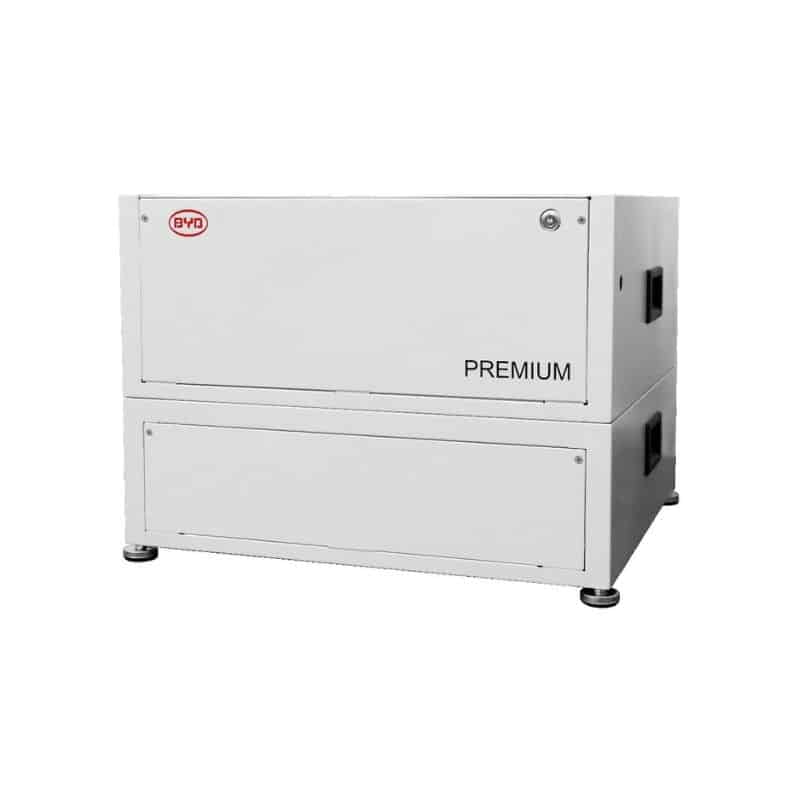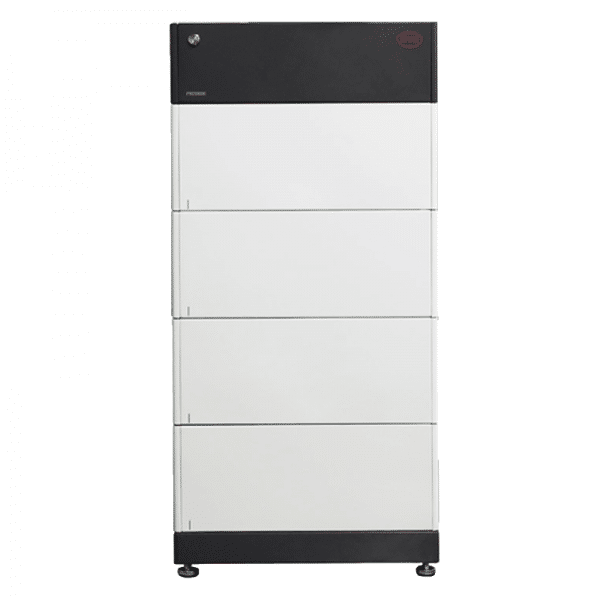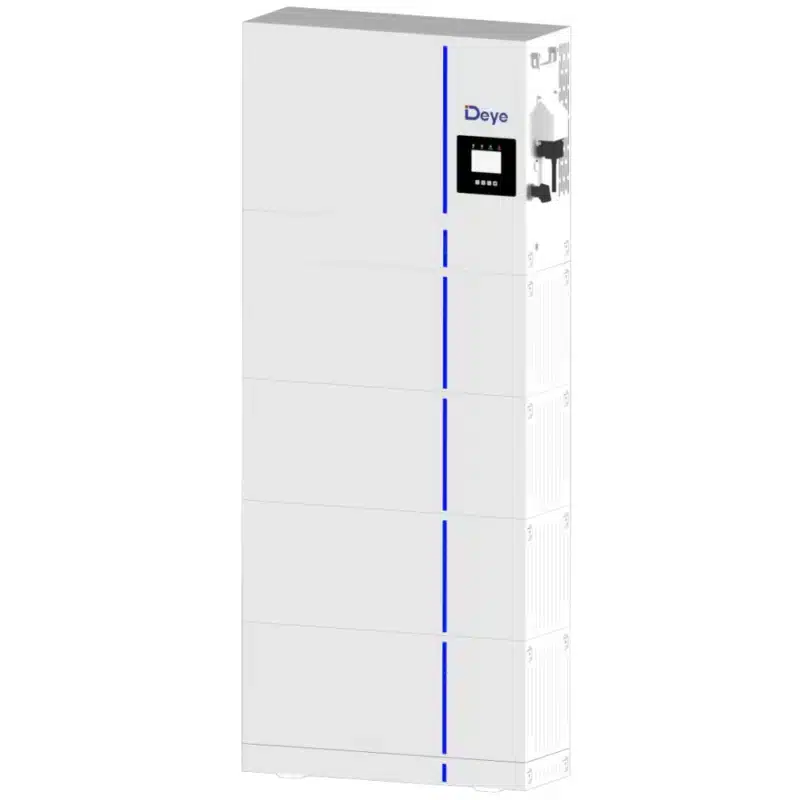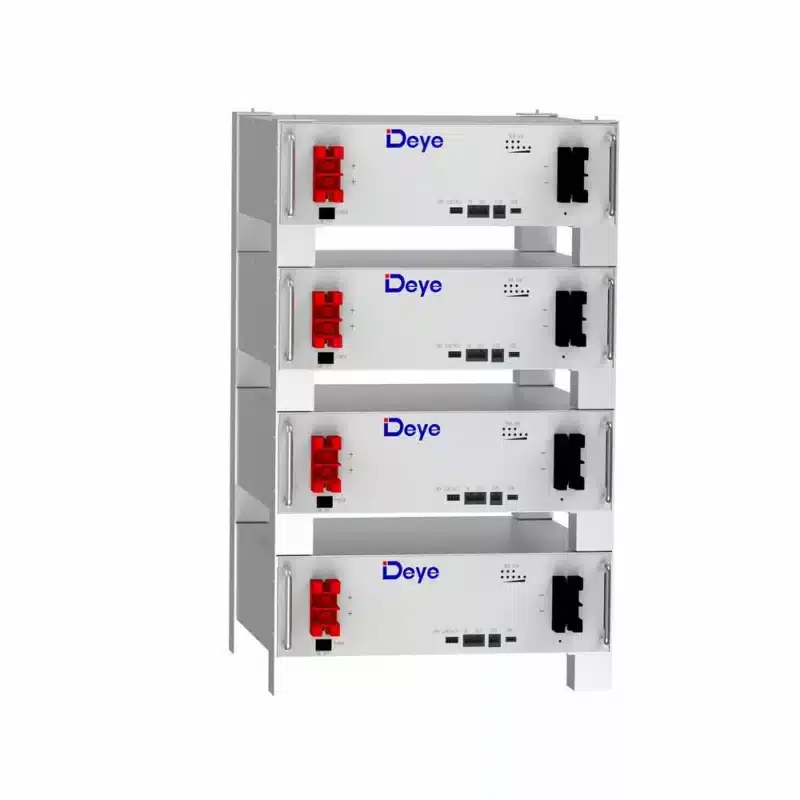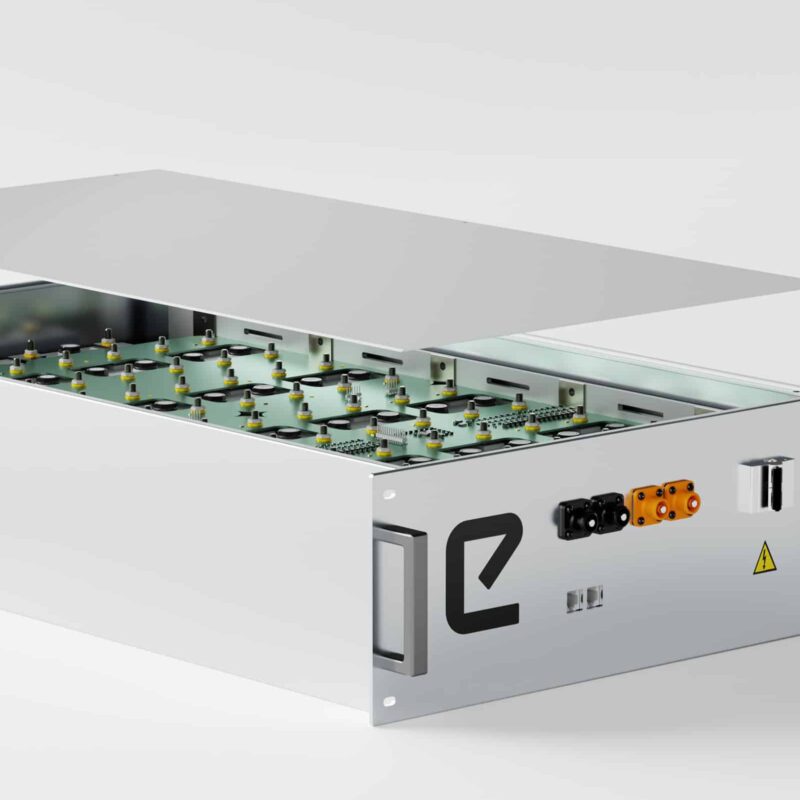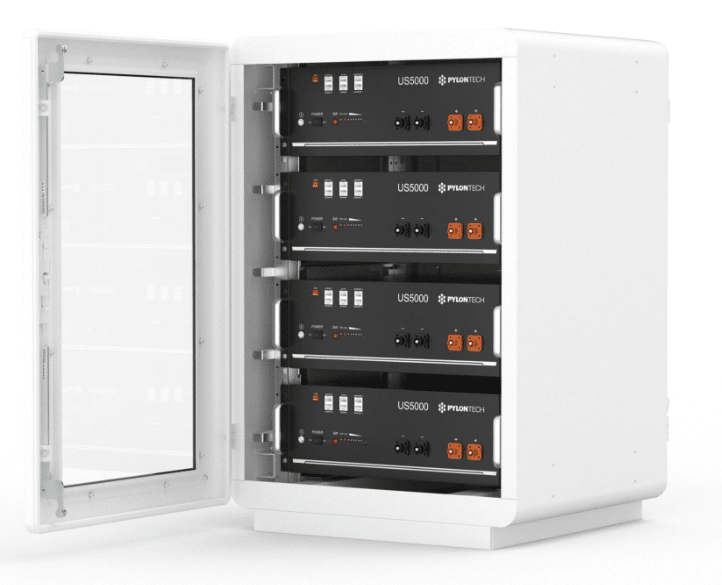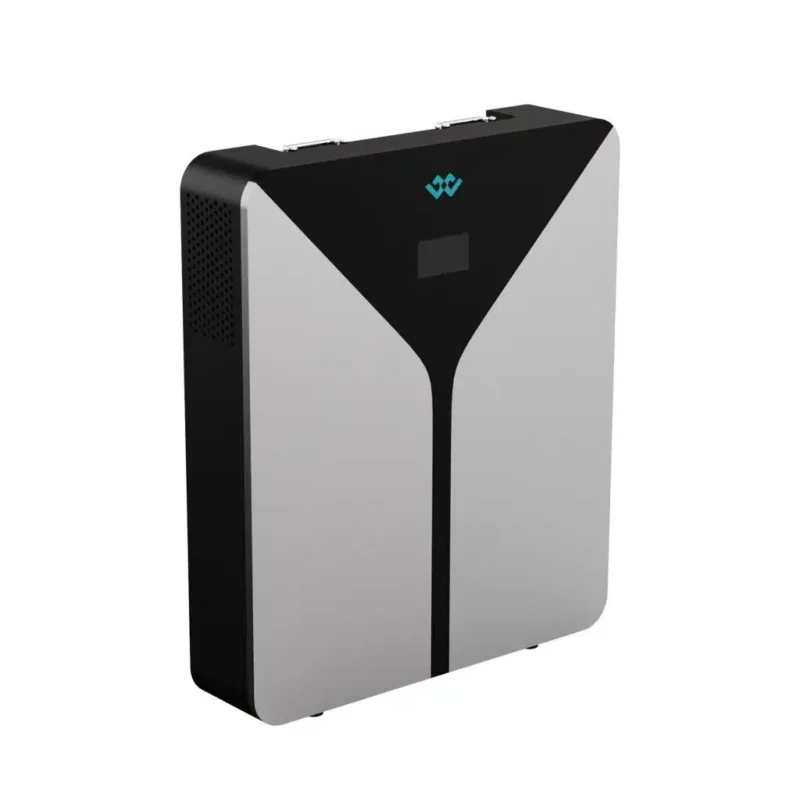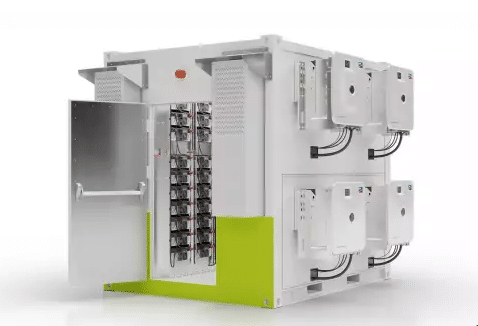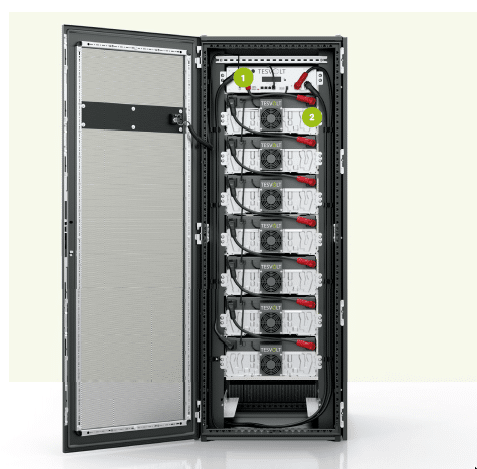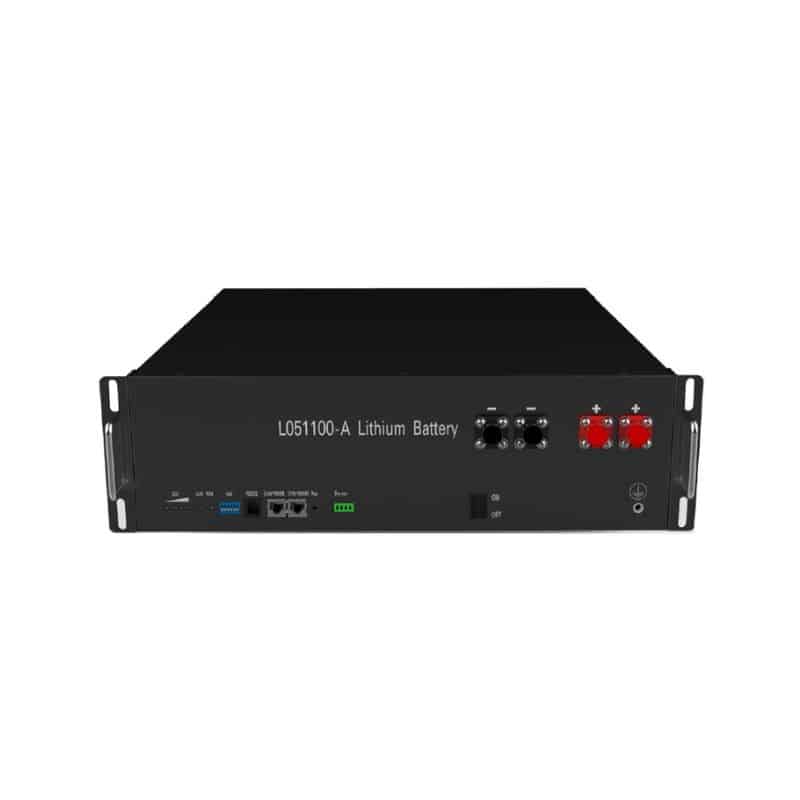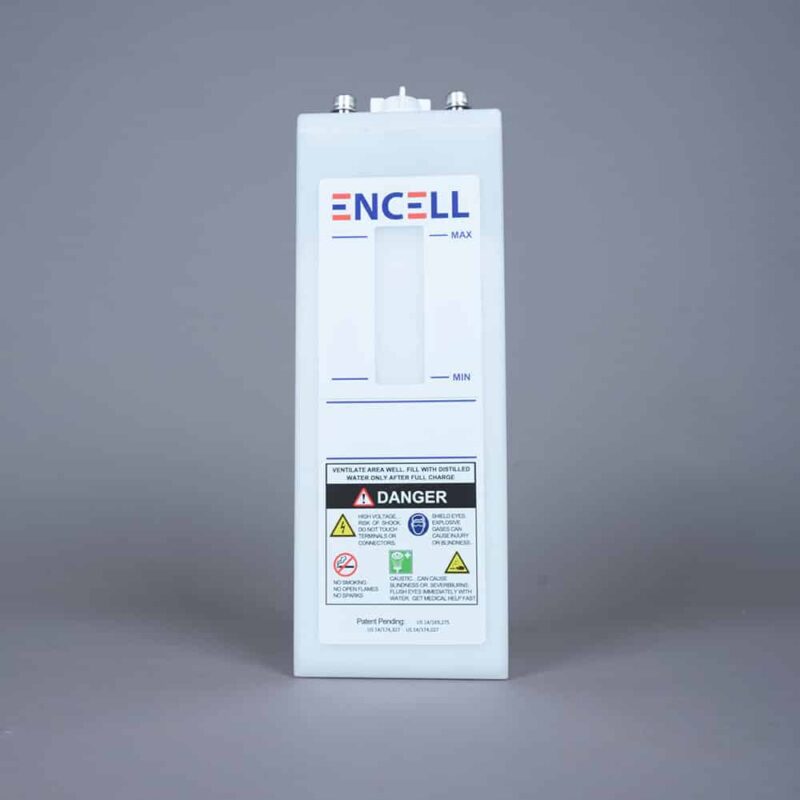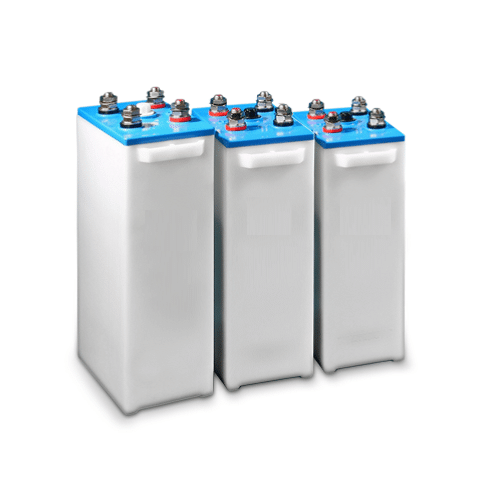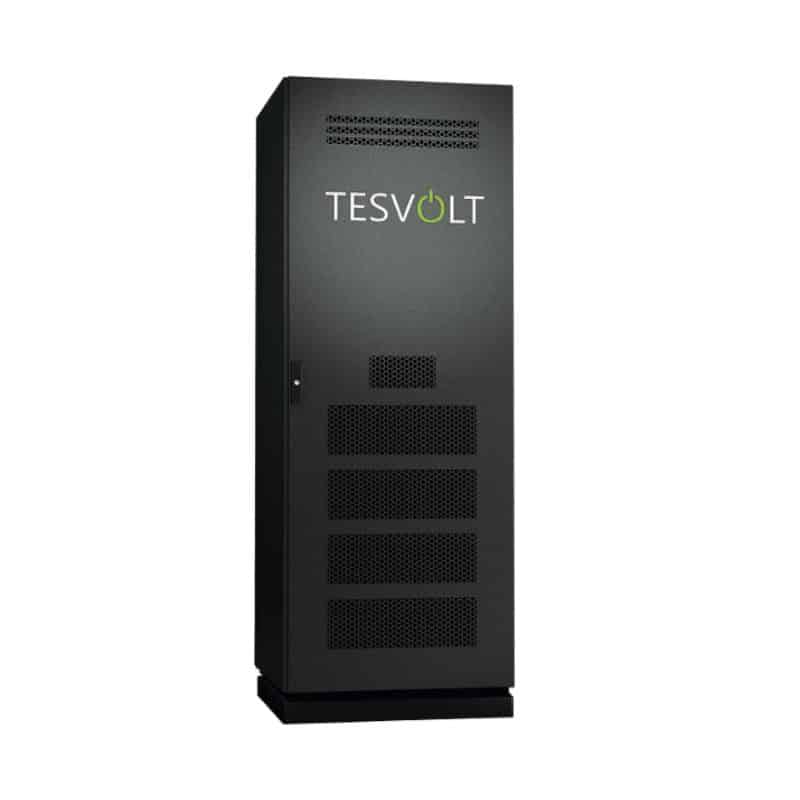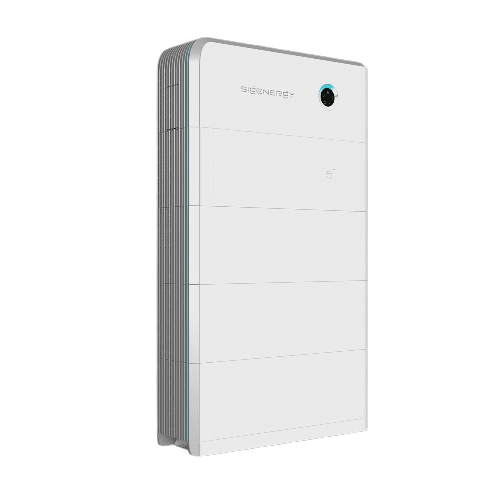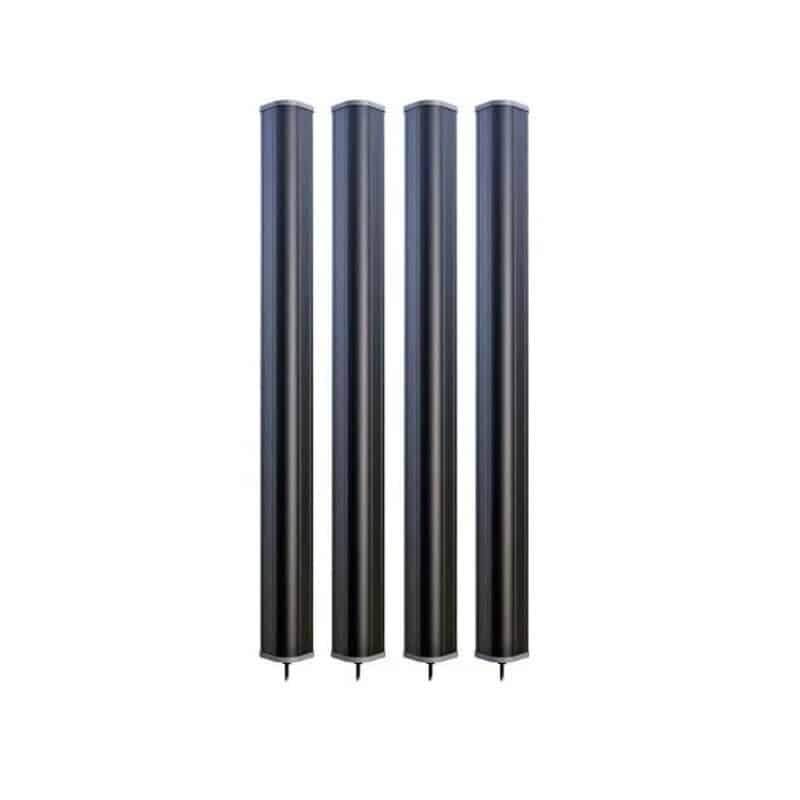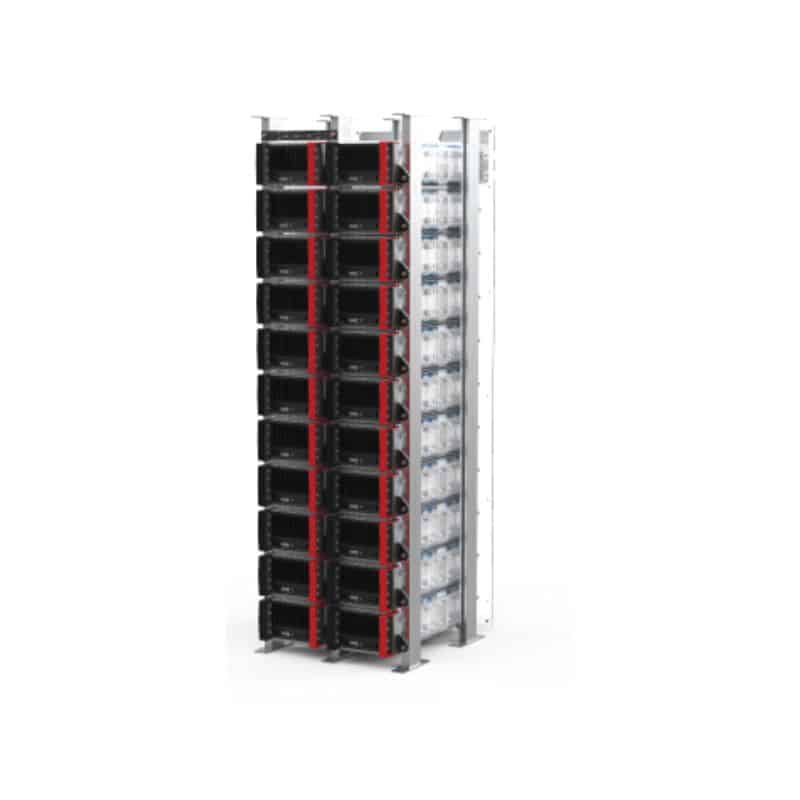Solar Battery: Energy Storage Solutions
Why equip yourself with a solar battery?
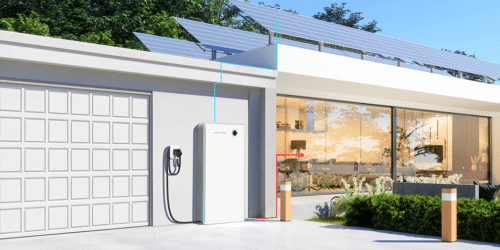
There are a number of reasons why you would want to add a solar battery to your system. Whether in an isolated site, hybrid, or commercial & industrial scenario, we have a battery that will be adapted to your needs, profitable and durable, from 2 to several hundred kWh.
Maximize the use of energy from solar panels : Batteries allow you to store solar energy for use in the evening and at night. With the installation of a solar battery, you will import less energy from EDF, and you will save on your electricity bills. We can therefore talk here about optimizing self-consumption (hybrid), coupled with your solar panels.
Make HP/HC arbitrage: If you don't have a solar battery, time-of-use rates could significantly increase your electricity bills. But a battery with a “stock” of energy (capacity) in KwH, and enough solar panels can power you during these peak periods when the price of electricity is higher.
Some battery systems (e.g. SIGENERGY) are capable of making this type of intelligent arbitrage, to recharge with electricity from the network outside peak hours when it makes sense. For example, if it seems that there will not be enough sun to recharge the batteries the next day via the panels, by coupling a weather forecast.
Solar self-sufficiency thanks to batteries (backup): All our ranges of batteries offered are capable of operating in isolation, that is to say without the presence of EDF. Thus, you can benefit from a partial or total so-called “emergency” (= backup) function to secure your charges in the home. During the day, if an EDF outage occurs, you can continue to benefit from solar energy, via your panels.

What are the different types of solar batteries?
The evolution of solar batteries: the decline of GEL and Lead batteries:
Solar batteries have undergone significant development, marked by the decline of old technologies such as GEL and lead batteries (Hoppecke brand, Victron, Enersys, etc.). Once popular, GEL batteries, with their electrolyte in gel form, and AGM (Absorbed Glass Mat) batteries, although requiring little maintenance and offering a relatively long lifespan, are now outdated. Their performance and lifespan, generally between 800 and 900 cycles for GEL and up to 10 years for AGM, pale in comparison to the advances in lithium batteries. Likewise, open lead batteries, despite their economic cost, require significant maintenance and are limited by their non-watertight design. Today, they are still sold in entry-level solar kits, where AGM batteries, due to their very low price, make it possible to have low-cost installations, particularly for camper vans.
The technical superiority of Lithium-ion solar batteries:
Lithium-ion solar batteries, thanks to their compactness and long lifespan, have quickly established themselves as the technology of choice for solar energy storage. They offer higher energy efficiency and a significantly longer lifespan than GEL and lead batteries, marking a turning point in solar energy storage. Lithium batteries are equipped with an electronic internal management system, a BMS, which will optimize discharge and charging according to the voltages of the solar panels and the inverter-charger used. Capacities vary between 2 to 10 kWh per element, depending on the battery brands. The discharge power can be up to 5000W for some models. The quality of the BMS will also influence the lifespan of the lithium battery, and its discharge capacity and therefore energy returned.
So-called “alternative” battery technologies: Nickel-Iron, Lithium Titanate, and Sodium-ion:
At the same time, other emerging technologies, such as Nickel-Iron, Lithium Titanate, and Sodium-ion batteries. Nickel-Iron batteries, known for their robustness and longevity, are distinguished by their ability to withstand deep charge and discharge cycles without significant degradation, while ensuring rapid discharge if necessary. They are ideal for off-grid solar systems. They can deliver up to 8000 cycles, and their electrolyte can be renewed. They can be discharged to 0% without risk. The price is around €600 per kWh.
Lithium Titanate solar battery technology, on the other hand, offers extremely fast charging and an extended lifespan, even in extreme weather conditions. Although expensive, lithium titanate solar batteries have the best warranty on the market (20 years for Zenaji), or 10x that of a Hoppecke or Victron AGM lead battery! The price, on the other hand, is approximately 3x times higher than a conventional lithium battery.
Finally, Sodium-ion batteries are emerging as a promising alternative, offering a more affordable and environmentally sustainable solution. Although still in the development phase, these batteries are being considered for large-scale applications, due to their low production cost and abundance of sodium. Their energy capacity is a little lower than lithium solar batteries, due to an energy density of around 130 Wh/Kg, compared to 160 for LiFePO batteries.
The transition to more advanced battery technologies, including lithium-ion, Nickel-Iron, Lithium Titanate, and Sodium-ion, reflects continued advances in solar energy storage. This development promises increased efficiency, better sustainability and a reduced ecological footprint, paving the way for a new and more sustainable era of solar energy.
Why are lithium solar batteries superior to lead batteries (AGM, OPZs)?
The most notable difference between lithium technology (LIFEPO for example) and AGM/GEL batteries such as Hoppecke or Enersys lies in the charge/discharge capacity. The chart below depicts capacity as a percentage of rated capacity versus discharge rate (or speed) (in power). With very high battery discharge rates, the capacity of an AGM/GEL lead-acid battery is only 60% of its rated capacity:
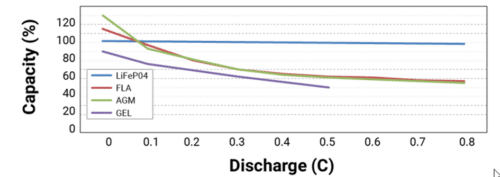
Therefore, in solar systems where the battery is heavily loaded or regularly with discharge peaks, a lithium battery with a lower capacity will have a greater USABLE capacity than a lead-acid battery with a similar capacity. In other words, with a similar capacity, the lithium battery will certainly cost more, but you will be able to use a lower capacity since it is not necessary to oversize it to absorb discharge peaks.
The other advantage of LIFEPO lithium batteries, compared to AGM/GEL lead batteries, lies in the cycle capacity (lifespan). LIFEPO technology has approximately 10x more cycle capacity compared to the best OPZs batteries. This makes the cost of stored kWh much lower than lead, which means that the lithium battery will not need to be replaced over the life of the solar system:
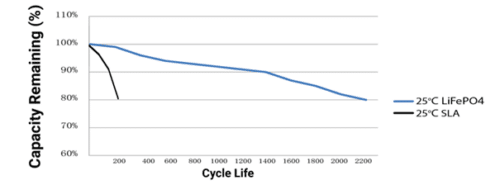
How does a solar battery work?
A solar battery can be imagined as a sort of electrochemical “sandwich” used to store energy. On one side you have the anode, and on the other side you have the cathode. Between the two, there is an ionic conductive interface, called the electrolyte, and a separator.
Negatively charged electrons from the battery concentrate at the anode. As opposites attract, they want to go towards the positively electrically charged cathode in the battery. The electrolyte acts as a buffer, preventing electrons from taking the shortest path from the battery (which would cause an electrical short!).
Connecting the anode and cathode using an external wire allows the electrons in the battery to flow. This flow of electrons is what we call electricity.

Principle diagram (source: www.solarquotes.com)
In rechargeable solar batteries (technically called "secondary" batteries, as opposed to single-use batteries), an external energy source is used to reverse the current flow (via solar panels for example) . The energy is thus stored (we speak of kWh), for later use, or recharging via the solar panel.
There are many ways to arrange the cathode, anode and separator sheets in a modern lithium-ion solar battery.
They are usually built like a roller inside metal cylinders called cells. A home energy storage system can have thousands of these cylindrical battery cells. We can also find a rectangular type construction, which is called prismatic. Finally, there are the “pouch-cell” leaflet designs found at Pylontech in particular:

Battery power AND energy! not to be confused …
In our guide to solar autonomy, we explained the distinction to be made between power and energy density (or capacity). Here is the diagram of the bathtub which is easy to understand:

When it comes to batteries, a useful analogy is water flowing through a pipe into a container, except the water would be electricity, and the power would be the flow rate:
- Power (kW), or “power” in English, is the speed at which water flows through the pipe, in or out of the container.
- Energy (kWh), or capacity, is the amount of water the container can hold.
Most lithium-ion solar batteries have a maximum continuous output between 3 and 5 kW. A Pylontech US5000 for example, has a power of 2.4 kW continuous, and up to 5KW peak. If I ever want to get 10 kW of power from my battery system, I will need to add a second battery.
Nickel-Iron, NIFE, Lithium LFP, NMC, Sodium? What to choose ?
A few years ago, when we talked about battery storage, it was a safe bet that you were in an isolated site (off-grid) type situation. And for good reason, the price of lithium-ion batteries in particular was 4 to 6 times higher than today:

The dominant technology around ten years ago was still lead-acid (OPZs in particular from the Victron brand, Hoppecke). There were also AGM or GEL batteries, always in lead technology. Lead-acid technology had disadvantages (cumbersome size, limited lifespan, gas release, intolerance to deep cycling, etc.) and required regular maintenance, which was complex. In addition, despite their fairly low price at first glance, it was necessary to take into account the low capacity available because the maximum discharge was limited to 30%, in order to maintain a correct lifespan!
The price of lithium batteries has therefore decreased drastically, reaching USD 139 per kWh (Bloomberg article.)
The two main lithium technologies are nickel-manganese-cobalt (NMC) and lithium-iron-phosphate (LifePO). The TESVOLT HV for example uses NMC Samsung SDI cells, while batteries for residential use such as Pylontech or BYD use LifePO exclusively.
It will be noted that each battery has its own specificities, but that the LifePo prevails in the number of cycles, thermal stability, and lifespan.

LiFePO battery: unbeatable value for money:
Solar batteries based on LFP chemistry are free of cobalt and strategic metals, and are therefore more virtuous from an ecological and C2G point of view (“cradle to gate = life cycle of the battery from its extraction to its recycling).

Nickel-Iron battery: priority to durability:
Other technologies exist, such as Nickel-Iron battery which we have been selling since 2018, which combines robustness and incomparable hardiness for “niche” applications (especially isolated sites). These are very special batteries which are certainly bulky and require maintenance, but which have an almost unlimited lifespan. They also do not require a BMS, which is an advantage for those who appreciate “low tech” designs.
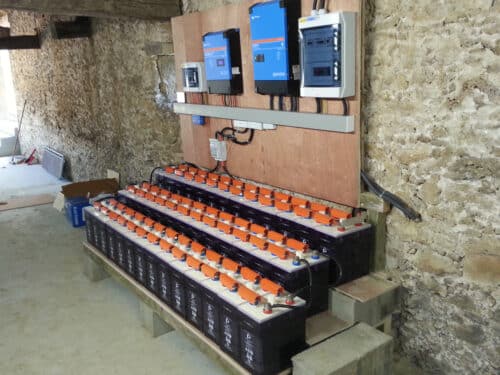
It also exists lithium titanate (LTO) batteries, which we have been offering via the Australian brand Zenaji for 3 years now. A high-performance technology, with incredible cycling (20000 cycles) but at a prohibitive price.
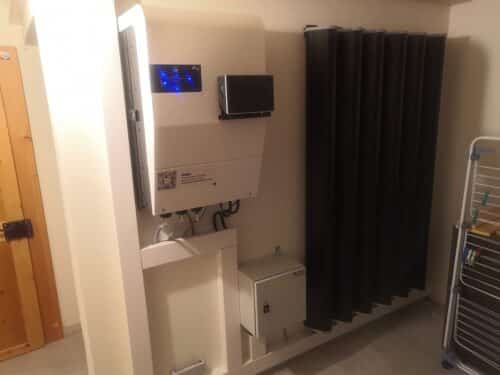
Sodium-ion batteries finally, are starting to arrive on the market. We are going to offer it in 2024, notably through our partnership with BIWATT and their fully integrated solution. The latter have unique advantages in terms of tolerance to extreme temperatures, and the absence of the use of high criticality metals (= in limited quantity). However, their price is currently similar or even slightly higher than that of LIFEPO solar batteries, and we must have perspective on usage in order to be certain that their lifespan is interesting compared to technically mature batteries.
Carefully check the battery warranty conditions!
Reading battery warranty contracts can be tedious. Here are the essential points to understand about any energy storage system you are considering purchasing.
Battery degradation (“EOL”), a primary criterion for evaluating the number of cycles available!
What is the capacity of the solar battery at the end of its warranty? 70% after 10 years is a typical value. This is the famous “EOL”. Manufacturers provide charts which determine the number of cycles achievable by the battery before its residual capacity crosses the famous “EOL” threshold (= end of life). For example, with the TESVOLT solar battery, we see that the batteries are guaranteed 6500 cycles at 100% discharge, for 10 years. In other words, you can cycle them 6500 times at 100% for 10 years and you should not go below 70% residual capacity at the end of these cycles!
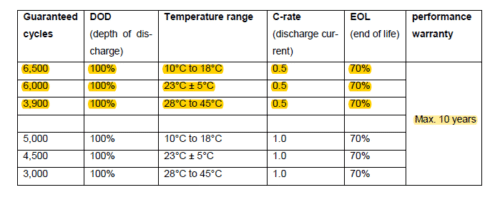
Another way of interpreting it would be to say that in standard use, a residential battery is cycled approximately 280 per year in “full cycle” equivalent (= 100% DOD). This is explained by seasonality (in fact, in summer the battery will be less used than in winter!) Thus, a TESVOLT guaranteed 6500 cycles will actually allow you to extract 6500/280 = Approximately 23 years of operation before major degradation.
The health of your solar battery, the SOH!
The other important concept to remember is that of the SOH, meaning “state of health” of the battery, indicates its residual capacity. An SOH of 98% indicates that its EOL is
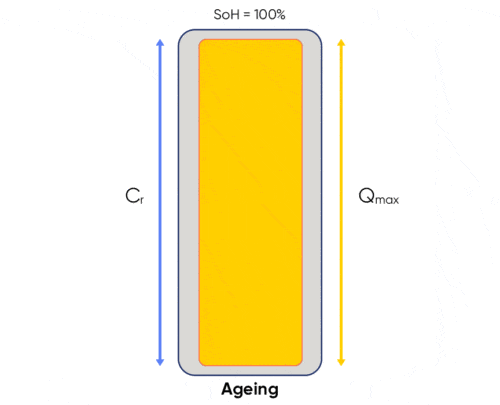
It is also important to keep in mind that the manufacturing quality of a lithium cell will impact its calendar life, i.e. its lifespan excluding wear and tear (whether it is used or not). On TESVOLT for example, the extrapolated degradation is very low, around 70% after 16 years of intensive use at 100% DOD. This is confirmed by our field experience since one of our installations on an isolated site for 4 years with a TESVOLT still demonstrates an intact SOH (“state of health”)!
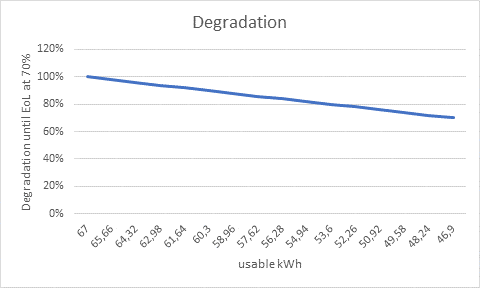
Opposite, the replacement of the SOH on one of our autonomous systems (Studer) with batteries, in service for 4 years. This is a TESVOLT TS48V battery with Samsung SDI cells. The capacity is always 100%, which indicates a very long lifespan to come.
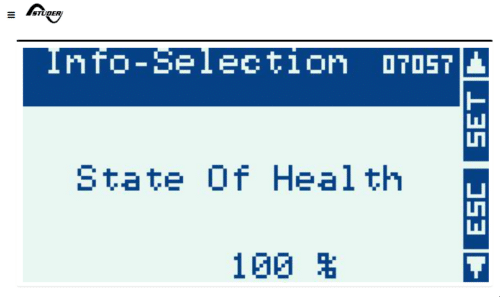
Rather encouraging after 4 years of service on an isolated site!
Opposite, the SOH of a Pylontech battery, also in service for 4 years. We see that the SOH is much lower, and that the batteries have lost 8% of capacity. The degradation is therefore much greater.
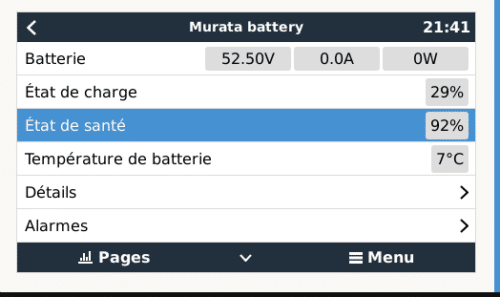
In conclusion, it is crucial to fully understand the issues related to the technical choice you make for your solar battery. This will have an impact on security, but also on the profitability and smooth running of your project in the long term. Not all batteries are equal! 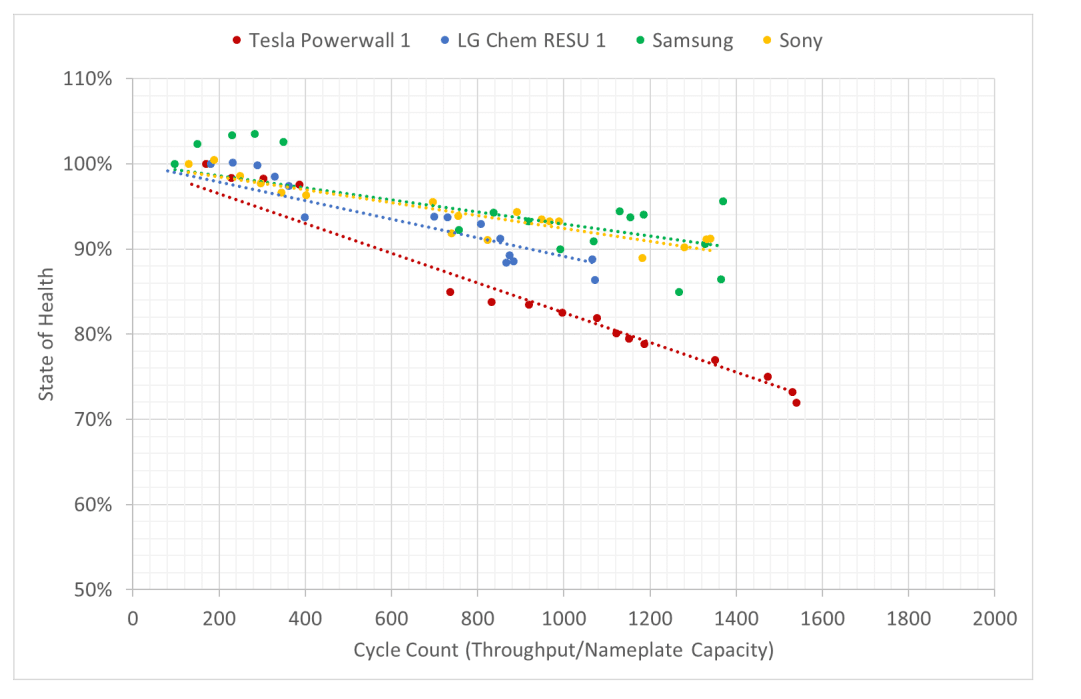
-
BYD LVL 15.4 kWh battery
8.999,00€ -
BYD LVS 48V battery
3.654,00€ - 16.960,00€ -
DEYE ESS AI-W5.1 battery
5.999,00€ - 8.800,00€ -
DEYE SE-G5.1 Pro 5 kWh battery
1.299,00€ -
Pylontech US battery
1.296,00€ - 1.600,00€ -
UZENERGY Powerlite 5.12 kWh battery
2.160,00€ -
TESVOLT TS 48V batteries
11.515,00€ - 39.491,00€ -
Zenaji Aeon 1.93 KwH
2.808,00€

